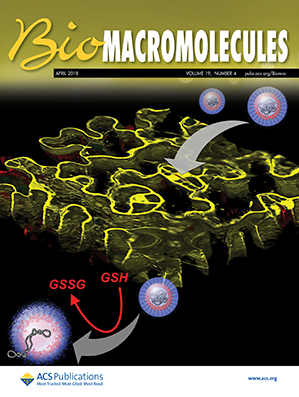Computer-aided diagnosis for the resect-and-discard strategy for colorectal polyps: a systematic review and meta-analysis.
IF 5.5
2区 化学
Q1 BIOCHEMISTRY & MOLECULAR BIOLOGY
引用次数: 0
Abstract
BACKGROUND The resect-and-discard strategy allows endoscopists to replace post-polypectomy pathology with real-time prediction of polyp histology during colonoscopy (optical diagnosis). We aimed to investigate the benefits and harms of implementing computer-aided diagnosis (CADx) for polyp pathology into the resect-and-discard strategy. METHODS In this systematic review and meta-analysis, we searched MEDLINE, Embase, and Scopus from database inception to June 5, 2024, without language restrictions, for diagnostic accuracy studies that assessed the performance of real-time CADx systems, compared with histology, for the optical diagnosis of diminutive polyps (≤5 mm) in the entire colon. We synthesised data for three strategies: CADx-alone, CADx-unassisted, and CADx-assisted; when the endoscopist was involved in the optical diagnosis, we synthesised data exclusively from diagnoses for which confidence in the prediction was reported as high. The primary outcomes were the proportion of polyps that would have avoided pathological assessment (ie, the proportion optically diagnosed with high confidence; main benefit) and the proportion of polyps incorrectly predicted due to false positives and false negatives (main harm), directly compared between CADx-assisted and CADx-unassisted strategies. We used DerSimonian and Laird's random-effects model to calculate all outcomes. We used Higgins I2 to assess heterogeneity, the Grading of Recommendations, Assessment, Development, and Evaluation approach to rate certainty, and funnel plots and Egger's test to examine publication bias. This study is registered with PROSPERO, CRD42024508440. FINDINGS We found 1019 studies, of which 11 (7400 diminutive polyps, 3769 patients, and 185 endoscopists) were included in the final meta-analysis. Three studies (1817 patients and 4086 polyps [2148 neoplastic and 1938 non-neoplastic]) provided data to directly compare the primary outcome measures between the CADx-unassisted and CADx-assisted strategies. We found no significant difference between the CADx-assisted and CADx-unassisted strategies for the proportion of polyps that would have avoided pathological assessment (90% [88-93], 3653 [89·4%] of 4086 polyps diagnosed with high confidence vs 90% [95% CI 85-94], 3588 [87·8%] of 4086 polyps diagnosed with high confidence; risk ratio 1·01 [95% CI 0·99-1·04; I2=53·49%; low-certainty evidence; Egger's test p=0·18). The proportion of incorrectly predicted polyps was lower with the CADx-assisted strategy than with the CADx-unassisted strategy (12% [95% CI 7-17], 523 [14·3%] of 3653 polyps incorrectly predicted with a CADx-assisted strategy vs 13% [6-20], 582 [16·2%] of 3588 polyps incorrectly diagnosed with a CADx-unassisted strategy; risk ratio 0·88 [95% CI 0·79-0·98]; I2=0·00%; low-certainty evidence; Egger's test p=0·18). INTERPRETATION CADx did not produce benefit nor harm for the resect-and-discard strategy, questioning its value in clinical practice. Improving the accuracy and explainability of CADx is desired. FUNDING European Commission (Horizon Europe), the Japan Society of Promotion of Science, and Associazione Italiana per la Ricerca sul Cancro.计算机辅助诊断用于结肠直肠息肉的切除和抛弃策略:系统综述和荟萃分析。
背景切除即丢弃策略允许内镜医师在结肠镜检查(光学诊断)过程中通过实时预测息肉组织学取代息肉切除术后病理检查。在这项系统性回顾和荟萃分析中,我们检索了 MEDLINE、Embase 和 Scopus,检索时间从数据库开始到 2024 年 6 月 5 日,没有语言限制,检索内容为评估实时 CADx 系统与组织学相比在全结肠微小息肉(≤5 mm)光学诊断中的性能的诊断准确性研究。我们综合了三种策略的数据:当内镜医师参与光学诊断时,我们只综合了预测置信度较高的诊断数据。主要结果是本可避免病理评估的息肉比例(即高置信度光学诊断的比例;主要获益)和因假阳性和假阴性而被错误预测的息肉比例(主要危害),直接在 CADx 辅助和 CADx 非辅助策略之间进行比较。我们使用 DerSimonian 和 Laird 的随机效应模型计算所有结果。我们使用 Higgins I2 评估异质性,使用推荐、评估、发展和评价分级法评估确定性,使用漏斗图和 Egger 检验法检查发表偏倚。本研究已在 PROSPERO 注册,CRD42024508440.研究结果我们发现了 1019 项研究,其中 11 项(7400 个微小息肉、3769 名患者和 185 名内镜医师)被纳入最终的荟萃分析。三项研究(1817 名患者和 4086 个息肉[2148 个肿瘤性息肉和 1938 个非肿瘤性息肉])提供的数据可直接比较 CADx 无辅助策略和 CADx 有辅助策略的主要结果指标。我们发现,在可避免病理评估的息肉比例方面,CADx 辅助策略与 CADx 非辅助策略之间无明显差异(4086 个息肉中,90% [88-93], 3653 [89-4%] 诊断为高置信度 vs 4086 个息肉中,90% [95% CI 85-94], 3588 [87-8%] 诊断为高置信度;风险比 1-01 [95% CI 0-99-1-04; I2=53-49%; 低确定性证据;Egger 检验 p=0-18)。与 CADx 辅助策略相比,CADx 辅助策略错误预测息肉的比例较低(CADx 辅助策略错误预测的 3653 个息肉中,12% [95% CI 7-17], 523 [14-3%] vs CADx 辅助策略错误诊断的 3588 个息肉中,13% [6-20], 582 [16-2%];风险比 0-88 [95% CI 0-79-0-98];I2=0-00%;低确定性证据;Egger 检验 p=0-18)。阐释CADx对切除-丢弃策略既无益也无弊,这对其在临床实践中的价值提出了质疑。希望提高CADx的准确性和可解释性。资金来源欧盟委员会(Horizon Europe)、日本科学促进会和意大利癌症研究协会。
本文章由计算机程序翻译,如有差异,请以英文原文为准。
求助全文
约1分钟内获得全文
求助全文
来源期刊

Biomacromolecules
化学-高分子科学
CiteScore
10.60
自引率
4.80%
发文量
417
审稿时长
1.6 months
期刊介绍:
Biomacromolecules is a leading forum for the dissemination of cutting-edge research at the interface of polymer science and biology. Submissions to Biomacromolecules should contain strong elements of innovation in terms of macromolecular design, synthesis and characterization, or in the application of polymer materials to biology and medicine.
Topics covered by Biomacromolecules include, but are not exclusively limited to: sustainable polymers, polymers based on natural and renewable resources, degradable polymers, polymer conjugates, polymeric drugs, polymers in biocatalysis, biomacromolecular assembly, biomimetic polymers, polymer-biomineral hybrids, biomimetic-polymer processing, polymer recycling, bioactive polymer surfaces, original polymer design for biomedical applications such as immunotherapy, drug delivery, gene delivery, antimicrobial applications, diagnostic imaging and biosensing, polymers in tissue engineering and regenerative medicine, polymeric scaffolds and hydrogels for cell culture and delivery.
 求助内容:
求助内容: 应助结果提醒方式:
应助结果提醒方式:


